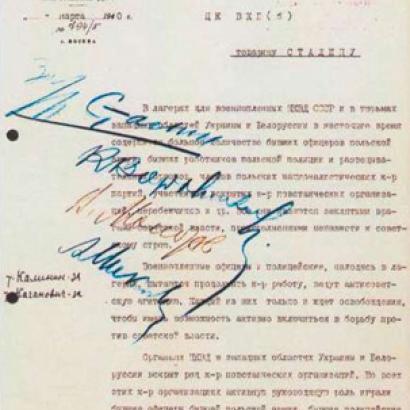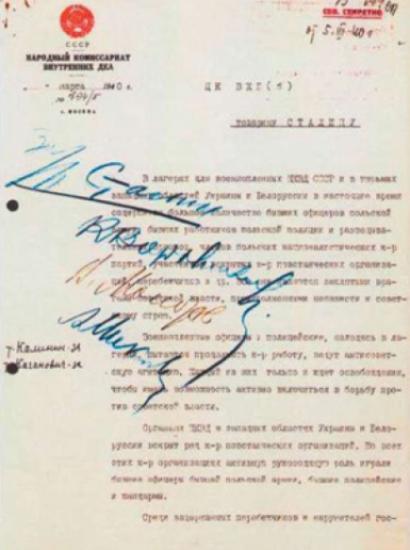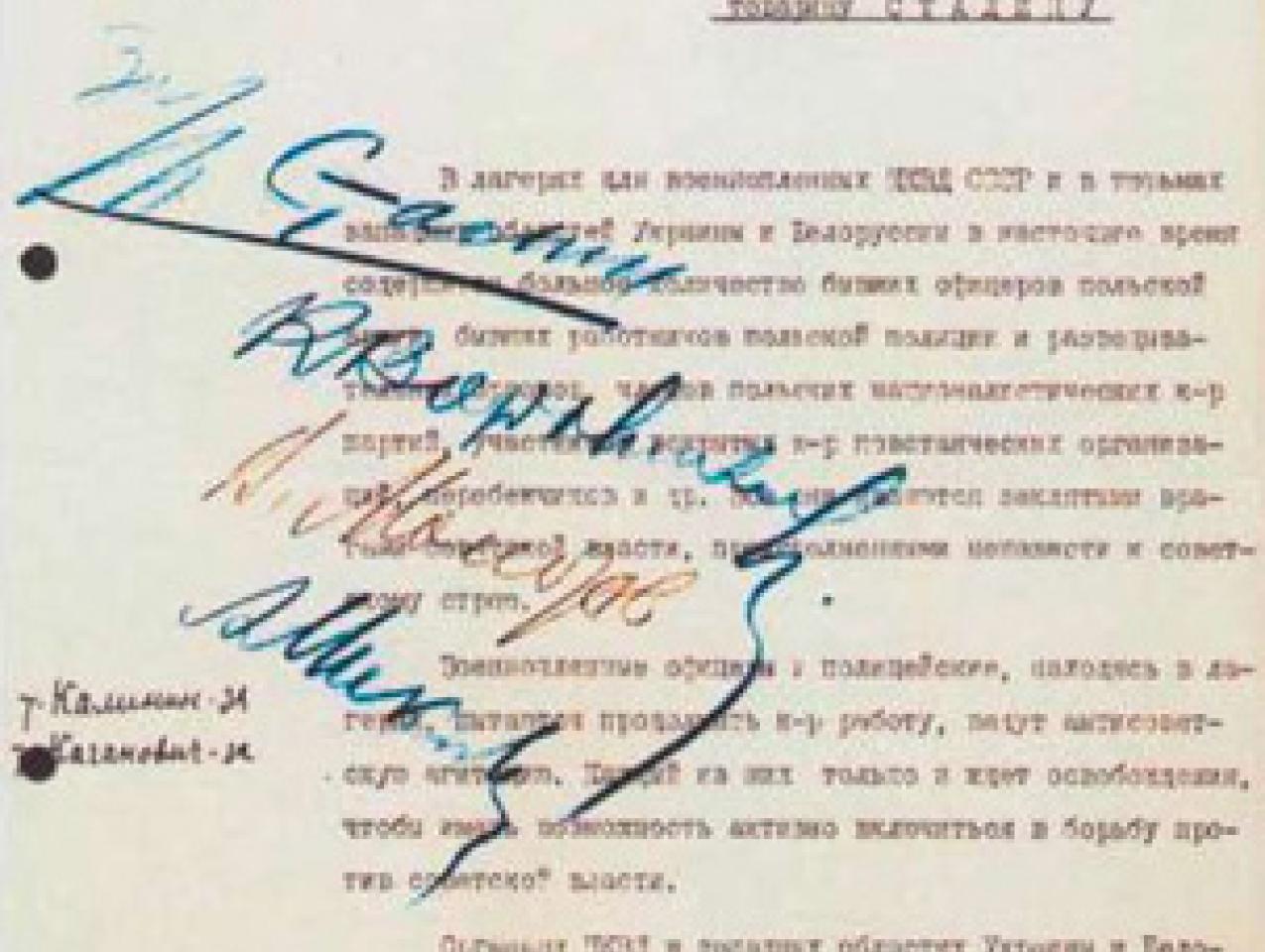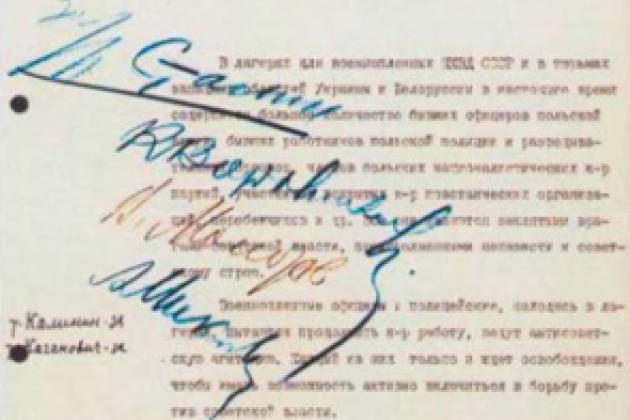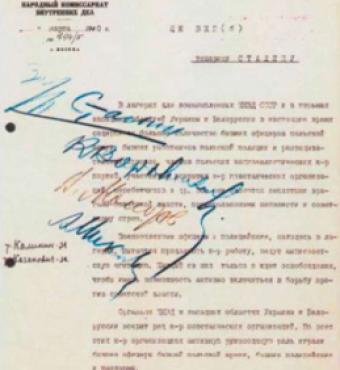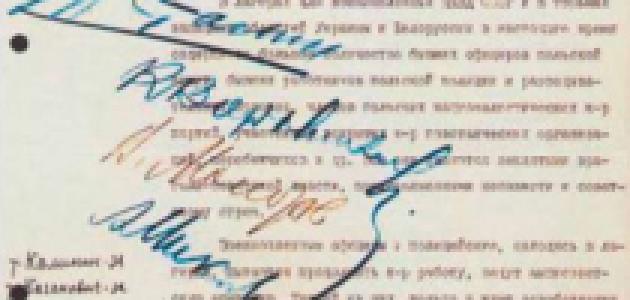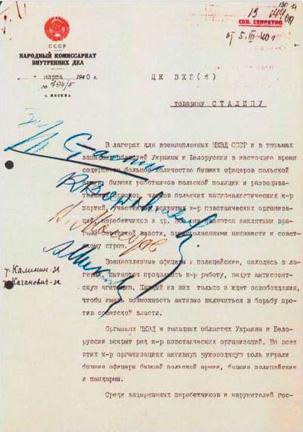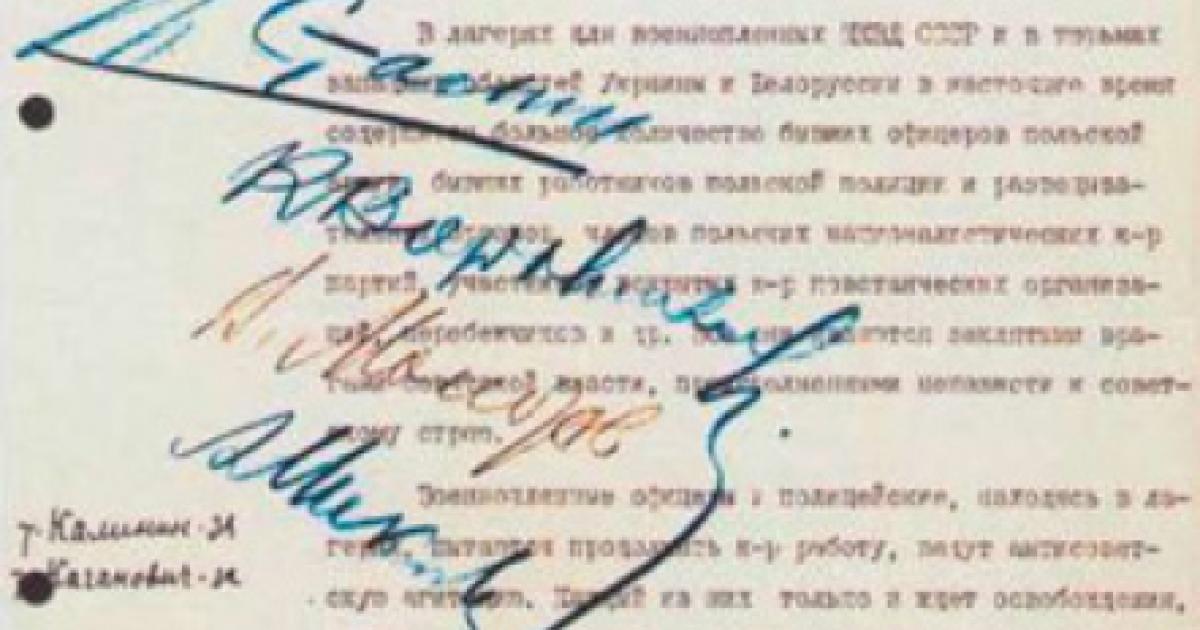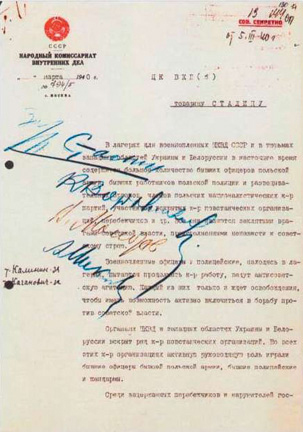
Since the Russian Archival Service posted, on direct orders from President Dmitry Medvedev, proof that Joseph Stalin and his Politburo had ordered the Katyn massacre of Polish officers and officials on March 5, 1940, the Russian Archival Service’s website has received a steady stream of curious visitors. (See a copy of the document in the sidebar from a Hoover Digest 2008 article by Paul Gregory and Maciej Siekierski.)
Hoover research fellow Paul Gregory is not convinced, however, that Russian politicians will continue to be forthcoming on their country’s history. “The posting of the March 5, 1940, document may persuade skeptical Russians who had been told that the atrocity was committed by the Nazis, but it is not really a breakthrough,” Gregory said, adding that “the March 5, 1940, document has been available to researchers in the Hoover Institution Archives since the early 1990s, and it has been used in a number of publications.”
The Hoover Archives’ Fond 89 (the Communist Party of the Soviet Union on trial) also contains the key documents on the Katyn cover-up, beginning with Stalin’s fabrication of Nazi guilt in 1943. Gregory explained that those documents show that every Soviet leader, from Khrushchev to Yeltsin, knew the true story of Katyn. Khrushchev, he said, was advised “to destroy these documents,” and Gorbachev was warned that, if these documents were released, the outside world might conclude “that the Soviet Union is no better and may be worse than Germany at that time and bears no less responsibility for the war.” Only under Russia’s first president, Boris Yeltsin, was the March 5, 1940, document handed over to the Polish government.
Under the next president, Vladimir Putin, now serving as prime minister of the country, Russia again began to obfuscate, Gregory said. In court rulings of 2005 and 2008, the Russian military courts ruled that the (unnamed) guilty parties had all died, that only a few bodies had been positively identified, and that Polish claims of genocide were not valid. In addition, a vast gray literature began to appear in the Russian press and on the Internet, again denying Russian guilt for the Katyn massacre. In its latest ruling, in January 2009, the Russian Supreme Court terminated the investigation of the Katyn massacre on the grounds that there had been no proper identification of the victims and that the statute of limitations had long expired.
Maciej Siekierski, curator of the East European Collection at the Hoover Institution Archives and a specialist on Poland and Eastern Europe, believes that “the news of the ‘official’ opening of Katyn wartime massacre archives would be greeted with considerable reserve in Poland.” He noted several reasons for this: the country is still mourning the loss of its two presidents and its top generals, as well as dozens of prominent religious and civic leaders, all of them tragically killed just weeks ago (ironically, near the original crime scene in the Katyn forest). The investigation of the cause of the crash has not yet been concluded.
Siekierski also discussed the disappointment many Poles felt when other documents promised by the Russians at an April 7 observance at Katyn were not forthcoming. One document frequently mentioned was the “Belarusian list” of some 3,870 Poles shot, mostly in the prison in Minsk. For the family members of Poles who never returned from Russian prisons and camps and who were awaiting the documents with hope and interest, it was a disappointment. “Putin did not bring the list, and the Russian side claimed that it does not have it after all,” Siekierski said. He added that, after the tragic crash near Katyn, the Russian Archives Services, on orders of President Medvedev, officially declassified and published electronically its Katyn documentation, the contents of the famous ‘Packet No. 1,’ but it contains nothing more than that given to Lech Walesa by Boris Yeltsin in 1992 and published by the Poles immediately afterward. Packet No. 1 has been available on microfilm in the Hoover Archives since roughly the same time.
The release of the documents may not be the end of controversy over the Katyn massacre. Gregory warns that Russia’s leaders will continue to deny past history, closing archives or making access difficult.
Gregory, an endowed professor in the Department of Economics at the University of Houston, Texas, and a research professor at the German Institute for Economic Research in Berlin, is the author or coauthor of numerous books and articles on the Soviet economy and economic demography, including Lenin’s Brain and Other Tales from the Secret Soviet Archives (Hoover Press, 2008) and the forthcoming book Politics, Murder, and Love in Stalin’s Kremlin: The Story of Nikolai Bukharin and Anna Larina (Hoover Press, 2010).
Gregory also served on the editorial board of the seven-volume Gulag documentary series entitled The History of the Stalin Gulag, published jointly by the Hoover Institution and the Russian Archival Service. He is coordinating Hoover’s Lost Politburo Stenogram Project and is involved in Hoover’s ongoing acquisition of the Stalin Archive.
Hoover Institution Archives East European Collection
“The Hoover Institution Archives has collections that are now closed in Russia,” said Richard Sousa, director of the Hoover Institution Library and Archives. He noted that the archives is receiving microfilm of the Vilnius KGB archives; some one million pages of documents on Soviet police terror in occupied Poland and Lithuania are in the Hoover Archives.
Documents relating to political conditions in the Soviet Union from 1903 to 1992 are available on microfilm reels in the archives. The approximately ten million documents are housed at three Russian archives: the Russian State Archive of Contemporary History (Rossiiskii gosudarstvennyi arkhiv noveishei istorii–-RGANI), the Russian State Archives of Social and Political History (Rossiiskii gosudarstvennyi arkhiv sotsialno-politicheskoi istorii---RGASPI), and the State Archives of the Russian Federation (Gosudarstvennyi arkhiv Rossiiskoi Federatsii---GARF).
Three guides to the microfilm collection are available, with a separate guide for each repository in Russia.




